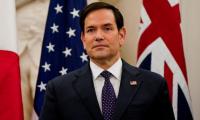Past governments have claimed that Pakistan will soon become an ‘Asian Tiger’ or that CPEC is the game changer we were waiting for. Yet, the Pakistan economy has stayed firmly in its decades-old circular logic of stability, vulnerability, and IMF support. Let us hope that it will soon break out of this loop and gradually move towards long-term growth.
Now that the external account has improved, it is time for Pakistan to ensure that we do away with our enduring dependence on outside help. We must strive for economic sovereignty. The question is whether Pakistan is ready to do so – because doing so places many demands on us, both as government and as society. It requires a fundamental change in the governance paradigm.
First, any step we take should be part of a plan for long-term economic growth. And that plan must come from within, not outside. It should be well thought through with all stakeholders on board. All political parties and state institutions and also all levels of government must buy in. Changing the game means that we understand what it takes to transform the economy, and that we follow through.
East Asia offers us a model to emulate. In quick succession from the 1950s, each economy there made GDP growth its primary goal. Most other considerations were secondary. GDP growth was their path to solve the issues of regional security and poverty.
East Asia emerged from World War II bruised, dispirited, and with a history of regional tensions and internal strife. It chose to combat security concerns by focusing on the economy. In due course, economic cooperation replaced tensions in the region. Internally too, prosperity helped build national unity and defence capabilities.
Pakistan has always faced an existential threat, which has worsened recently. However, without economic progress we will not have the resources to fund our security or protect our sovereignty.
The real miracle of East Asia is not a magic formula. It is the outcome of a very clear idea about the future of the state. Such clarity formed the basis of long-term plans. East Asian planners gave deep thought to issues, policies and instruments that would help them achieve their goals. Their leaders had an unusually profound concern for catching up with the West and improving the standards of living of all citizens. Each nation chose their own methods, but their fundamental mission was to gain economic strength through industrialization.
Culture and Confucius ethics may have had a role. Yet, the success of one economy after another shows that growth came from following a set of policies. Once decided, these policies were followed with determination and without compromise. In most cases, there was no room for favourites or exceptions. East Asia demonstrates that development is a political choice not an algorithm.
Most of us know already the broad parameters of the route that fast-growing economies have taken. We must now establish why Pakistan has not embarked on that path. To do so, we may look at causal relations that inform why some economies do well, and others don’t. Cherry picking ‘best practices’ is not enough. We must see how these relationships can be reproduced in Pakistan.
Growth results from increase in manufacturing value added, much of it for export. Export of goods assures us that the economy has gained in competitiveness and productivity. The Pakistan economy, therefore, needs policies that build an evolving industrial base. Yet, formulating and executing such policies need preconditions.
First among these is state effectiveness. At the base of government polices lies the institution of the state. East Asia provided their citizens an effective state with essential services and rule of law. Citizens saw their states as mostly just and fair. We must build the same relations between the Pakistan state and citizens.
Staying with East Asia as the example, the growth economies there ensured political stability, social cohesion, and economic relations within the region. Their leaders were also deeply committed to regional peace. In addition, there was governance longevity. Lee Kuan Yew was Singapore’s prime minister for 31 years. Malaysia’s Mahathir Mohamad for 22. There are other examples of able and committed leaders transforming their economies and societies, including the genius of Deng Xiaoping.
These governments also provided other preconditions for growth. Balanced budgets and external accounts ensured macro stability. With human capital crucial for growth in productivity, they focused on education and other social indicators. They also improved infrastructure services. Through its policies and priorities, the public sector thus lay the essential groundwork on which East Asia built a dynamic private sector.
With the public sector in the lead, the role of civil servants became critical. These countries made sure that the bureaucracy was capable and worked free from the influence of lobbies.
Looking at the above, Pakistan clearly has some work to do. We have a daunting list of areas where the country must catch up. But the challenges must not deter us from moving forward. It is not possible to address all issues that affect state effectiveness before launching a policy to industrialize. We should be able to do many things in parallel. Our plan should be to accomplish reforms over several years, not at once.
Pakistan has faced many problems before. Its people have always risen to challenges. With the resolve of a committed leader, supported by an able team, the whole country would respond to building a strong economy. We have no other option. For the sake of our sovereignty and our future this has to be done.
Recognizing where we stand as a state is the first step in embarking on a growth agenda. After this, we may move on to study the policies and instruments needed for long-term growth. I hope to discuss these policy instruments in a later column.
The writer is chair and CEO Institute for Policy Reforms, and a former commerce minister.
According to Trump, US is earning $2 billion per day in newly-introduced trade tariffs
Negligible contribution of e-commerce underscores persistent reluctance towards digital adoption
Autocratic regimes are hardest yet may not be geared towards public wealth and inclusivity
I presented these proposals which he must have also been briefed about by his ministries
Five people were killed, including one of the guards after being hit over the head with a fire extinguisher
Pakistan has a long way to go in providing equitable digital access to its population of nearly 250 million







